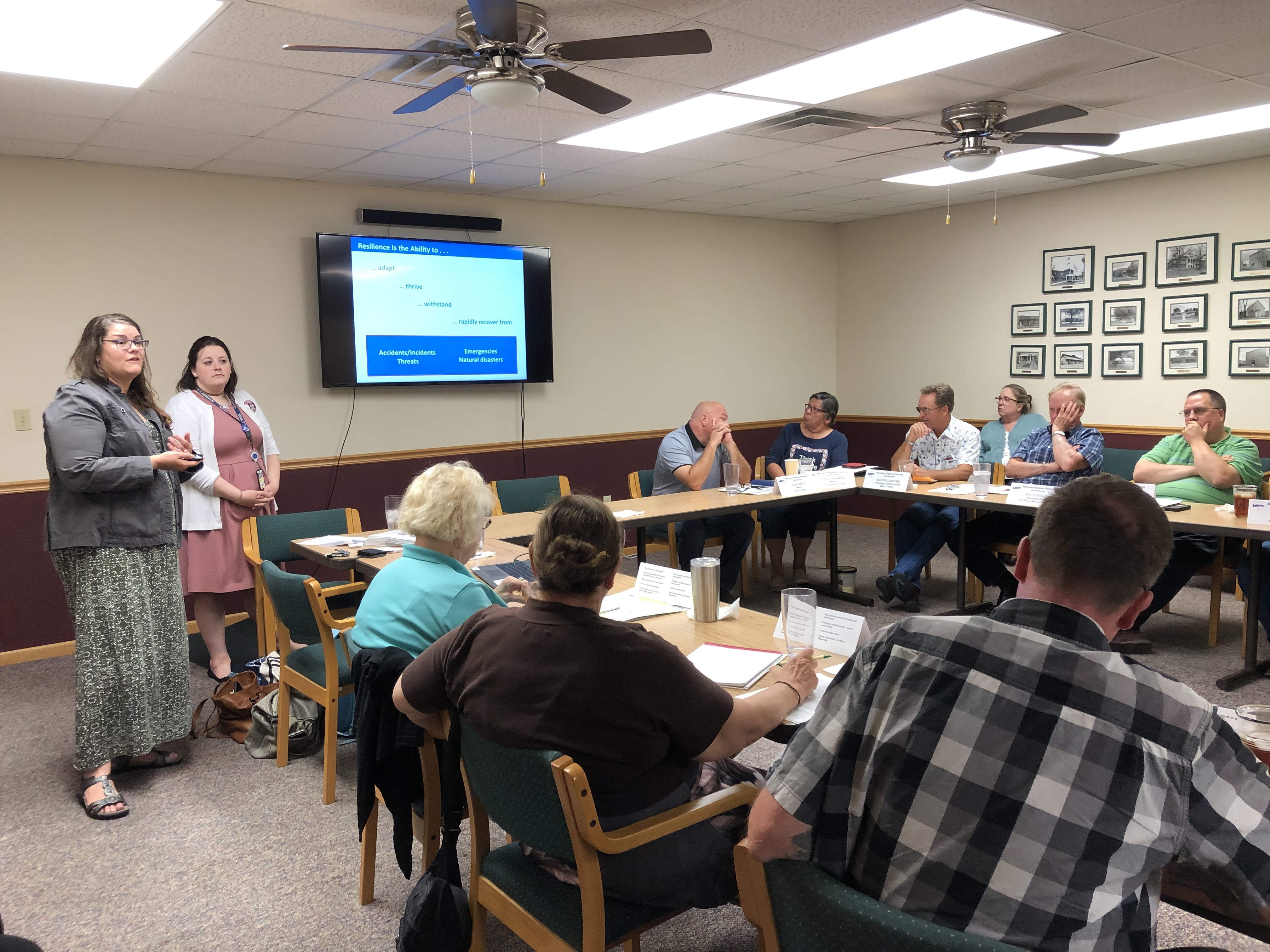For immediate release
For more information, contact

ST. JAMES—Disasters can strike at any moment. Is your community ready? Resiliency planning is a vital part of recovery from a disaster, according to Jessica Catron, the Missouri state disaster recovery coordinator with the State Emergency Management Agency (SEMA), and De’an Bass, a Federal Emergency Management Agency (FEMA) integration team lead for Missouri. Catron and Bass spoke with the Meramec Regional Planning Commission (MRPC) board at their Sept. 12 board meeting.
Communities face many diverse threats today, including natural disasters, cyber threats, business closures, health epidemics, mass casualty incidents, and more. The ability to respond and recover from any of those events takes significant resources. When the unanticipated happens, decision-makers have to make some really hard choices quickly, and those decisions can impact future action and opportunities. This dilemma highlights the need to build local resilience at all levels – individual, family, business, systems and community, said a statement drafted by SEMA and Bass.
Resiliency planning allows organizations and communities to adapt, thrive, withstand and rapidly recover from accidents, incident, threats and natural disasters. These efforts bring together the whole community in order to identify prioritize, and address the needs in the community in the event of a disaster. Those areas range from housing, health and social services, business and local economy, public utilities and community services, roads, parks and other natural and cultural resources, community identity and quality of life.
“The whole community includes you – local leaders, individuals and families, students, business owners, nonprofits, faith-based organization, educational institutions, local officials and others,” Bass said in the SEMA statement.
The benefits of pre-disaster planning include: better understanding of vulnerabilities, informed strategic decisions, expedited resilient recovery, effective recovery coordination, foundation for allocating resources, benchmarks to measure progress and whole community buy-in.
“The foundation of building resiliency begins at the local level by identifying potential hazards, their immediate impacts and how to overcome the challenges those threats cause,” Catron said. “These responsibilities are a crucial component to preparedness that will ultimately make our communities safer and stronger.”
Communities can take the following steps to begin planning processes, according to Bass and Catron:
Individuals, families, and businesses can find preparedness and resilience guidance and tools at www.ready.gov. Local officials may contact MRPC or their SEMA Regional Coordinator for more community resilience planning information.
In other business, the MRPC board:
Formed in 1969, MRPC is a voluntary council of governments serving Crawford, Dent, Gasconade, Maries, Osage, Phelps, Pulaski and Washington counties and their respective cities. Gasconade County Presiding Commissioner Larry Miskel serves as chairman of the board. A professional staff of 27 offers technical assistance and services, such as grant preparation and administration, housing assistance, transportation planning, environmental planning, ordinance codification, business loans and other services to member communities.
To keep up with the latest MRPC news and events, visit the MRPC website at www.meramecregion.orgor on Facebook at www.facebook.com/meramecregion/.
-30-